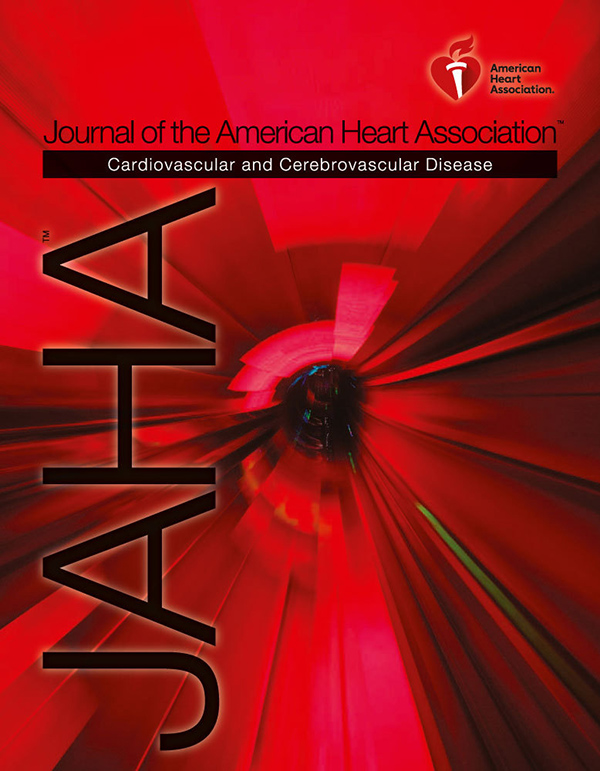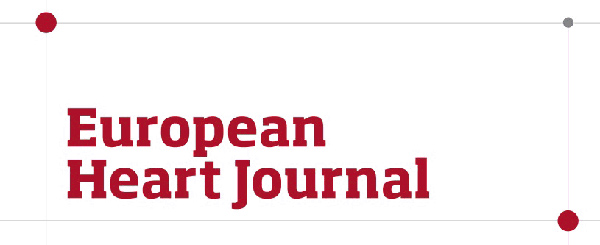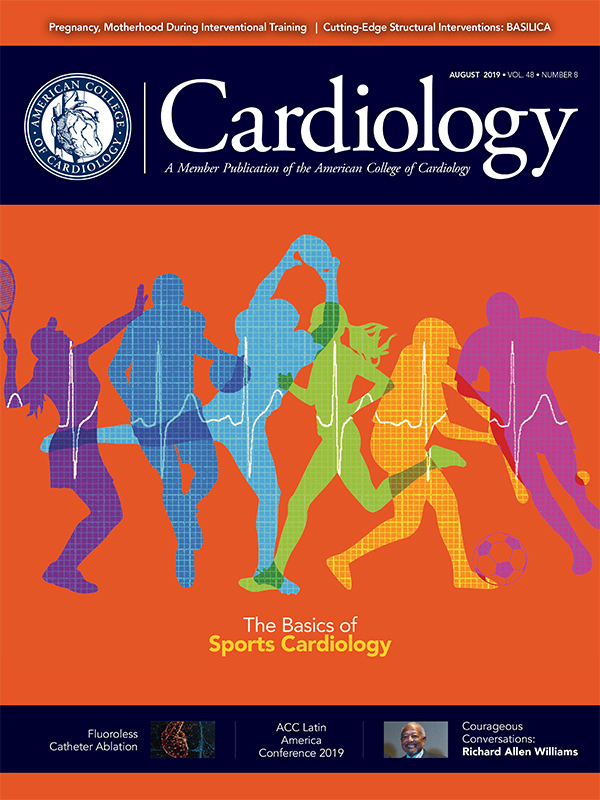Journal Wrap
The hottest research from various peer-reviewed journals – handpicked weekly by the ACC.org Editorial Board led by Kim Eagle, MD, MACC.
VA SYNTAX Score Predicts Risk After Revascularization

The VA SYNTAX score, a novel, simplified anatomical scoring system, can be used to assess longitudinal risk in patients undergoing coronary revascularization, according to a study published in JAMA Cardiology.
Patients in the Veterans Affairs (VA) Health Care System with >50 percent stenosis in at least one epicardial coronary artery on coronary angiography followed by percutaneous or surgical revascularization within 90 days were observed and data analyzed from January 1, 2010 through September 30, 2017. After exclusions, the final cohort included 50,226 patients (34,322 with PCI and 15,904 with CABG).
Researchers adapted a simplified version of the SYNTAX anatomical risk score to readily available angiographic data from the VA Clinical Assessment, Reporting and Tracking Program, including coronary anatomical dominance, location of stenosis and coronary segment, ostial location, noted calcification or thrombus associated with the lesion and bifurcation status.
VA SYNTAX scores were calculated and categorized by tertiles of score across all patients who underwent revascularization. The primary outcome was a composite of death, revascularization, rehospitalization for myocardial infarction (MI) and rehospitalization for stroke after initial revascularization (major adverse cardiovascular and cerebrovascular events [MACCE]). Individual clinical events were assessed as secondary endpoints.
The VA SYNTAX score was computed automatically based on data provided by physicians interpreting each angiogram. A slight increase in the anatomical risk score occurred for patients who had PCI (9.5 in 2010 to 10.5 in 2017; p<0.001 for trend) and CABG (10.5 in 2010 to 11.0 in 2017; p=0.02 for trend) over time.
The researchers divided VA SYNTAX anatomical complexity scores into tertiles. In patients who had PCI, the largest proportion (46.2 percent) was in tertile 1 (scores ≤7) and the lowest proportion (18.2 percent) was in tertile 3 (scores ≥15). Most patients undergoing CABG had the most anatomically complex disease (60.6 percent), with a small proportion (10.0 percent) in tertile 1.
In PCI patients, increasing anatomical complexity was associated with an increased risk of MACCE. The adjusted hazard ratio (aHR) was significantly higher in tertiles 2 and 3 (1.44 and 2.13, respectively) vs. tertile 1. This relationship was not seen in CABG patients; only repeat revascularization was associated with increasing complexity (aHR, 1.34).
For external validation, the VA SYNTAX score was applied to patients in the EXCEL trial. Among PCI patients, the proportion of patients who experienced MACCE increased with increasing tertiles of scores; among CABG patients, there was a similar proportion of patients across tertiles.
"These findings suggest that a simplified anatomical risk model can be automatically calculated from registry data and may be useful in predicting longitudinal outcomes for patients undergoing revascularization, independent of clinical characteristics," the authors write.
Valle JA, Glorioso TJ, Bricker R, et al. JAMA Cardiol 2019;Jun 26:[Epub ahead of print].
Warfarin, DOACs in AMI: No Increased Bleeding Shows NCDR Study

Patients with acute myocardial infarction (AMI) on warfarin or direct oral anticoagulants (DOACs) do not have an increased risk of in-hospital bleeding, compared with AMI patients not taking an anticoagulant, according to a study published in the Journal of the American Heart Association.
Dmitriy N. Feldman, MD, FACC, et al., used data from ACC's Chest Pain – MI Registry to examine in-hospital major bleeding based on home use of anticoagulants in 24,955 STEMI and NSTEMI patients with atrial fibrillation (AFib) or flutter. Among patients receiving home anticoagulants, the researchers also looked at the relationship between in-hospital outcomes and home anticoagulant status (warfarin vs. DOACs).
According to the results, among 6,471 STEMI patients with AFib or flutter, 15.7 percent were on warfarin, 13.0 percent were on DOACs and 71.3 percent were not taking an anticoagulant. Of 19,954 NSTEMI patients, 22.8 percent were on warfarin, 15.4 percent were on DOACs and 61.9 percent were not taking an anticoagulant.
Among STEMI patients, there were no significant differences in major bleeding based on anticoagulant status, with major bleeding occurring in 12.4 percent of those on warfarin, 11.2 percent on DOACs and 13.2 percent for no anticoagulant.
In addition, among STEMI patients undergoing primary PCI or receiving thrombolytic therapy, there were no differences in major bleeding based on anticoagulant status. STEMI patients had in-hospital mortality rates of 14.7 percent for those on warfarin, 10.8 percent on DOACs and 14.9 percent not on an anticoagulant.
For NSTEMI patients, in-hospital major bleeding rates were 7.0 percent among those on warfarin, 5.7 percent on DOACs and 6.7 percent for no anticoagulant. NSTEMI patients who received angiography or PCI within 48 hours were more likely to experience bleeding than those treated conservatively. Among NSTEMI patients, the in-hospital mortality rates were 5.5 percent for those on warfarin, 3.7 percent for DOACs and 6.1 percent for no anticoagulant.
According to the researchers, the study suggests that home use of warfarin or DOACs is not associated with increased bleeding among AMI patients with a prior history of AFib and may be associated with reduced mortality risk compared with no anticoagulant. They conclude that "in-hospital outcomes of STEMI and NSTEMI patients with AFib are not negatively affected by home warfarin or DOAC therapy despite the perceived high bleeding risk."
Feldman DN, Wang TY, Chen AY, et al. J Am Heart Assoc 2019;8(8):e011606.
Perioperative AFib Increases Stroke, Other Adverse Outcomes

Patients with perioperative atrial fibrillation (AFib) have a significantly increased risk of stroke, myocardial infarction (MI) and death one year after noncardiac surgery, according to findings published in the European Heart Journal.
Researchers pooled data from the POISE-1 and POISE-2 trials that studied various medications in patients undergoing noncardiac surgery. Patients with a known history of AFib were excluded. Perioperative AFib was defined as AFib that occurred within 30 days of surgery and was clinically symptomatic or required treatment.
The primary outcome was stroke at one year of follow-up, though other vascular outcomes were also evaluated. Cox proportional hazard models were used to compare the risk of stroke in patients with and without perioperative AFib. The authors adjusted for demographic and clinical risk factors.
There were 18,117 patients included in the study and 2.2 percent developed perioperative AFib. Patients with perioperative AFib were older and more likely to have diabetes, congestive heart failure and a prior stroke or transient ischemic attack. The incidence of stroke was 5.58 per 100 patient-years (95 percent confidence interval [CI], 4.14-7.02) in patients with perioperative AFib vs. 1.54 per 100 patient-years (95 percent CI, 1.43-1.64) in patients without perioperative AFib.
An increased risk of stroke was seen in patients with perioperative AFib (hazard ratio [HR], 4.17; 95 percent CI, 2.47-7.06) that persisted after adjustment (adjusted HR, 3.43; 95 percent CI, 2.00-5.90). Patients with perioperative AFib were also at higher risk of all-cause mortality, vascular mortality and MI. As a sensitivity analysis, the authors excluded patients who were anticoagulated (n=1,117) at the time of randomization and found a similar increased risk of adverse events.
"Based on these data showing that patients with perioperative AFib are at high risk of adverse outcomes, there is an urgent need to evaluate whether they can be safely reduced using oral anticoagulation or other treatments in this patient population," the authors write.
Conen D, Alonso-Coello P, Douketis J, et al. Eur Heart J 2019;Jun 25:[Epub ahead of print].
Risk Assessment Tool Utilizes hs-Tn to Diagnose MI

The diagnostic performance of high-sensitivity troponin (hs-Tn) for myocardial infarction (MI) is dependent on baseline hs-Tn levels, their absolute change and the time of sampling – all of which can be incorporated in a risk-assessment tool, according to recent research in the New England Journal of Medicine.
The COMPASS-MI study combined data from 15 different international cohorts of patients (n=22,651) presenting to the emergency department with symptoms suggestive of MI who had serial hs-Tn (Tn I or T) measurements. Patients with STEMI were excluded. The authors examined a wide range of cut-off concentrations of hs-Tn and a range of absolute changes to assess diagnostic performance in identifying patients at low or high risk of MI.
The short-term prognostic endpoint was the composite of subsequent MI (excluding index event) and 30-day mortality. Evaluation of diagnostic performance was performed in 9,604 patients and validated in 13,047 patients. The association between hs-Tn and long-term outcomes was examined in 7,682 matched pairs of participants (from the acute chest pain cohorts and 11 general population cohorts).
Of 22,651 patients, 3,455 (15.3 percent) presented with acute MI. The authors present the data by grouping patients according to negative predictive value/positive predictive value categories derived from combinations of hs-Tn cut-offs, absolute change in levels and resampling times (early 45-120 min vs. late 120-210 min). For example, hs-Tn <6 ng/L and an absolute change of <4 ng/L after 45-120 minutes resulted in a negative predictive value of 99.5 percent for MI.
In patients without acute MI, hs-Tn levels are strongly associated with a higher risk of long-term MI or death at one and two years.
"[I]n the COMPASS-MI project, we developed a tool that integrated the high-sensitivity troponin I or troponin T concentration at presentation, its dynamic change during serial sampling and the time between the obtaining of samples to allow for the estimation of both the probability of myocardial infarction on emergency department presentation and 30-day outcomes," the authors conclude. "We also provided estimates of long-term risk on the basis of the initial concentration of high-sensitivity troponin at presentation among patients in whom myocardial infarction was ruled out."
Neumann JT, Twerenbold R, Ojeda F, et al. N Engl J Med 2019;380:2529-40.
PPI Therapy With DAPT: Reduces GI Bleeding, Underused

Although proton pump inhibitor (PPI) therapy is associated with a reduced risk of upper gastrointestinal (GI) bleeding in patients treated with dual antiplatelet treatment (DAPT) after myocardial infarction (MI), it is used less than suggested by guidelines, according to research from the European Heart Journal.
Researchers linked Danish nationwide registries to identify patients taking DAPT seven days after hospital discharge following acute MI. They computed average risk of upper GI bleeding in relation to PPI use.
A total of 46,301 patients were included in the analysis. Based on European Society of Cardiology guidelines, 22 percent of the patients were are high-risk of GI bleeding. Among patients at high-risk and low-risk, prescription of PPI therapy increased from 23 percent to 42 percent and from 8 percent to 20 percent throughout the studied period.
Upper GI bleeding occurred in 471 patients during one-year of follow-up, or an annual incidence of 1.0 percent. Upper GI bleeding was seen in 1.7 percent of high-risk patients. Overall, compared with no therapy, PPI therapy was associated with a risk ratio for upper GI bleeding of 0.62 (95 percent confidence interval [CI], 0.48-0.77), corresponding to an absolute risk difference of 0.44 percent (95 percent CI, 0.39-0.48 percent). For high-risk patients, PPI therapy was associated with a similar absolute risk difference (0.47 percent; 95 percent CI, 0.43-0.51).
The authors state these findings suggest that bleeding prevention strategies should be better implemented in clinical practice, especially for those at higher risk for bleeding. PPI prescription increased throughout the study period but were still used less than recommended guidance for patients at increased risk for upper GI bleeding.
The researchers also found that while the guidelines' definition for high-risk correctly identified patients at higher risk of upper GI bleeding compared with the low-risk group, this risk stratification did not appear to identify patients with the most benefit of PPI therapy.
"Developing of future or improving established risk assessment schemes could potentially assist in identifying patients with greater treatment benefits," they conclude.
Sehested TS, Carlson N, Hansen PW, et al. Eur Heart J 2019;40:1963-70.
Keywords: ACC Publications, Cardiology Magazine, American Heart Association, Chest Pain, Cohort Studies, Anticoagulants, Atrial Fibrillation, Confidence Intervals, Coronary Angiography, Coronary Vessels, Constriction, Pathologic, Emergency Service, Hospital, Diabetes Mellitus, Follow-Up Studies, Hemorrhage, Heart Failure, Hospital Mortality, Ischemic Attack, Transient, Incidence, Myocardial Infarction, Percutaneous Coronary Intervention, Odds Ratio, Proportional Hazards Models, Prognosis, Proton Pump Inhibitors, Random Allocation, Registries, Risk Assessment, Risk Factors, Stroke, Thrombolytic Therapy, Thrombosis, Veterans, Warfarin, Troponin I, Troponin T
< Back to Listings

